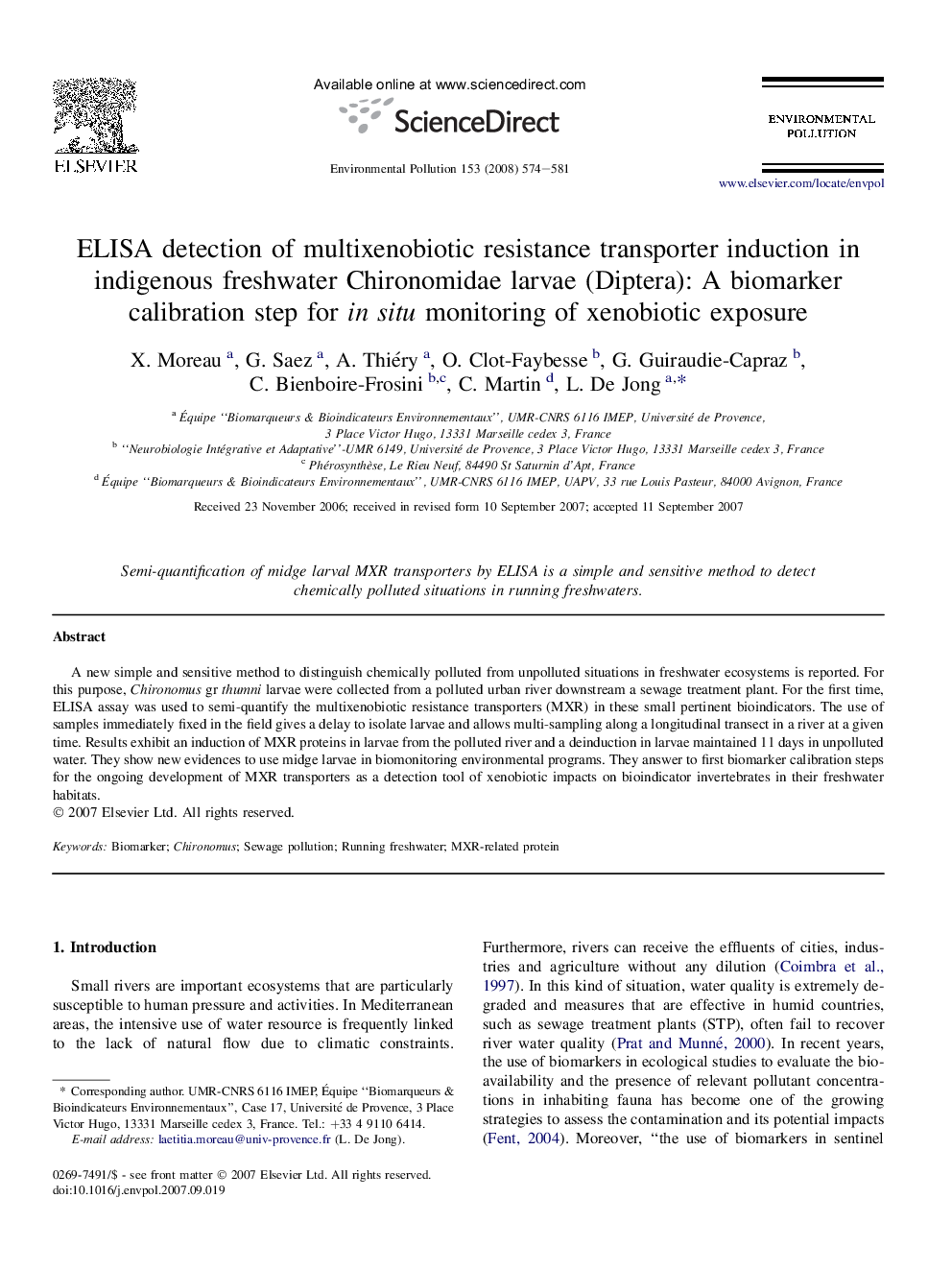| Article ID | Journal | Published Year | Pages | File Type |
|---|---|---|---|---|
| 4426998 | Environmental Pollution | 2008 | 8 Pages |
A new simple and sensitive method to distinguish chemically polluted from unpolluted situations in freshwater ecosystems is reported. For this purpose, Chironomus gr thumni larvae were collected from a polluted urban river downstream a sewage treatment plant. For the first time, ELISA assay was used to semi-quantify the multixenobiotic resistance transporters (MXR) in these small pertinent bioindicators. The use of samples immediately fixed in the field gives a delay to isolate larvae and allows multi-sampling along a longitudinal transect in a river at a given time. Results exhibit an induction of MXR proteins in larvae from the polluted river and a deinduction in larvae maintained 11 days in unpolluted water. They show new evidences to use midge larvae in biomonitoring environmental programs. They answer to first biomarker calibration steps for the ongoing development of MXR transporters as a detection tool of xenobiotic impacts on bioindicator invertebrates in their freshwater habitats.
